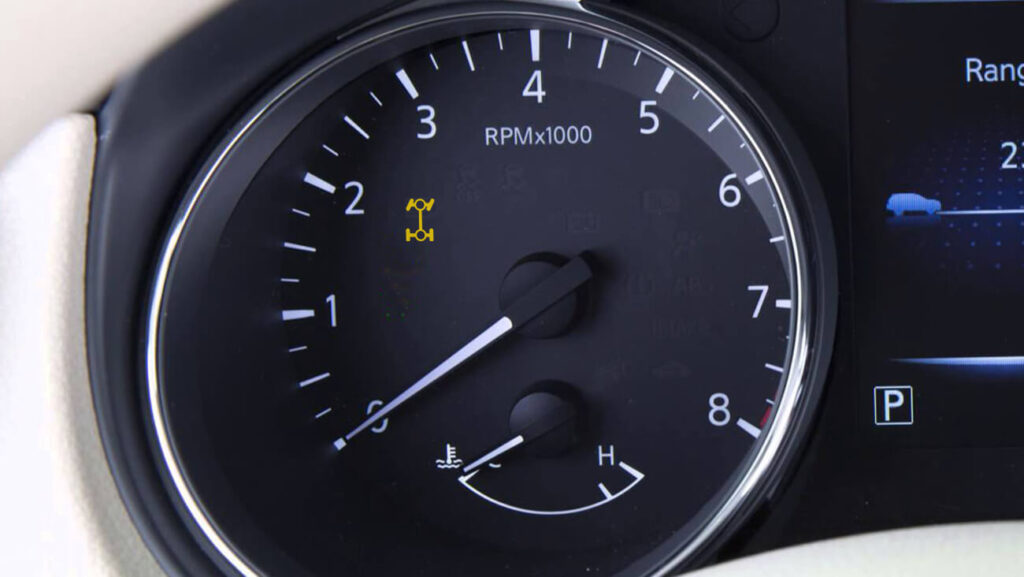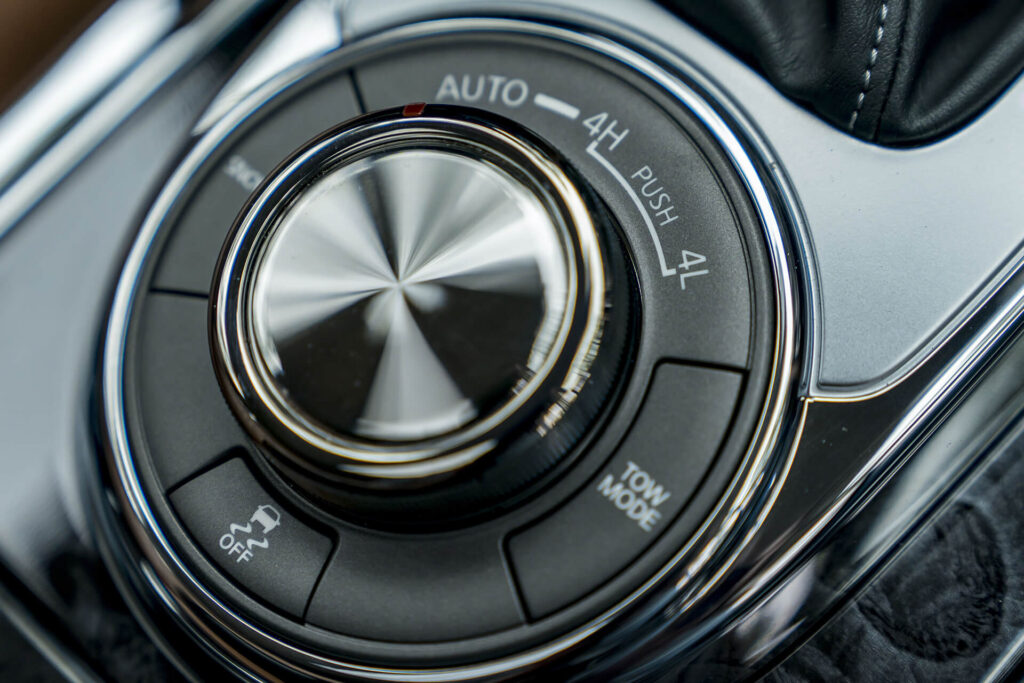A Four-Wheel Journey Into the Unknown — The Importance of Understanding Your 4WD Warning Lights
You’ve probably seen those car commercials: a rugged SUV tearing through mountainous terrains, splashing through streams, and cruising along the beach. Sounds like a dream, right? That’s the power of a Four-Wheel Drive (4WD) or All-Wheel Drive (AWD) system at work. But like all good things, they come with their set of complexities—highlighted by the occasional appearance of a warning light on your dashboard. Understanding these signals is not just a matter of vehicle performance; it’s a matter of safety.
Decoding the Dashboard: Understanding the 4WD Warning Light and its Exclamation Point
That tiny illuminated icon on your dashboard can say a lot. Ignoring these warning lights can lead to significant mechanical failures and even potential safety hazards:
• Standard 4WD Light: This usually appears as a simple vehicle icon or “4WD” text, often indicating that the 4WD system is engaged. This is generally a normal signal when you intentionally switch to 4WD.
• 4WD Light with Exclamation Point: If you see this symbol, it’s often a more urgent alert. The exclamation point typically signifies a malfunction or issue requiring immediate attention.
• Consult Owner’s Manual: Whenever you see these lights, especially with an exclamation point, pull over safely and refer to your vehicle’s manual. It will guide you on the specific issue the light is alerting you about.
• Scan Tools: If you have a scan tool handy, you can perform a preliminary diagnosis yourself. Some higher-end models will pinpoint the exact issue, although a professional diagnosis is recommended.
• Warning Bells and Chimes: Some vehicles also come with warning chimes or bells that accompany the 4WD warning lights. Do not ignore these auditory cues, as they add emphasis to the urgency of the issue.
• Dashboard Message: Newer vehicle models might display a textual message on the dashboard along with the 4WD light. These messages can provide further details about the issue at hand.
• Immediate Action: If the light comes with an exclamation point and doesn’t go away after you’ve consulted the manual and made basic checks, your next best step is to seek professional assistance as soon as possible.
Understanding your 4WD warning light and its variants is crucial for not only maintaining optimal vehicle performance but also ensuring your safety on the road.

4WD vs. AWD: What’s Under Your Hood?
The world of four-wheel drive (4WD) and all-wheel drive (AWD) can be mystifying. They sound similar but serve different purposes when it comes to performance and handling. Let’s start by understanding that 4WD is an older technology mainly designed for off-road scenarios. Here, power is distributed evenly to all four wheels, providing more traction and control. This makes 4WD excellent for challenging terrains, like rocky trails or muddy fields.
On the other hand, AWD is a more dynamic system. It adjusts the power supplied to individual wheels based on factors like traction and wheel speed. This means it’s more versatile but less rugged, making it suitable for a variety of road conditions but not necessarily for hardcore off-roading.
When it comes to dashboard indicators, they have their unique symbols to prevent confusion. For 4WD, you’ll usually encounter an icon representing a vehicle with four square wheels. For AWD, expect to see a car icon with what appears to be spinning or individually highlighted wheels. Knowing these differences doesn’t just satisfy automotive curiosity; it allows for more informed decisions about your vehicle’s capabilities and limitations.
Pushing the Limits: How Far Can You Drive with the Four-Wheel Drive Warning Light On?
The allure of 4WD is the freedom it offers to explore less-traveled paths. But what happens when the 4WD warning light flips on during your adventurous trek? Well, that’s your car telling you to pump the brakes on the adventure—at least temporarily.
While the warning light doesn’t mean you need to call a tow truck immediately, it’s an unambiguous signal to pull over and assess the situation. Continuing to drive with the warning light on is a gamble. For starters, you may experience increased fuel consumption. But more dire consequences can unfold, like damage to the transmission or other critical components. It’s a sign that should prompt you to take immediate action, whether that involves heading straight for a service station or calling for professional help.
Digging Deeper: The Anatomy of Four-Wheel Drive Systems
We often think of the 4WD system as a magical button that makes our cars invincible against rough terrains. But behind that button lies an intricate world of mechanical engineering. The 4WD system is a combination of gears, clutches, and couplings that work in harmony to distribute power to the wheels. It allows you to transition from driving on smooth highways to conquering rocky terrains with the flip of a switch—or the push of a button, depending on your vehicle.
However, any slight malfunction in these individual parts can bring your 4WD adventure to a screeching halt, triggering the dashboard warning light. It might be a problem with the transfer case, which shifts power from the front wheels to the back, or issues with the locking hubs, responsible for engaging or disengaging the wheels. It could also be something as simple as a sensor malfunction. But regardless of the cause, when that warning light comes on, it’s your vehicle’s way of saying something’s not right under the hood; you better check it out.
Understanding the anatomy of your 4WD system isn’t just for gearheads; it’s for anyone who wants to make the most of their vehicle’s capabilities. Knowledge is power, and in this case, it could be the difference between an exciting off-road adventure and a costly mechanical failure.
Repair Station: What to Expect When Your 4WD Light Won’t Go Off
So your 4WD light is stubbornly clinging to its on-state. What now?
• Diagnostic Tests: The first step will often involve a diagnostic test to identify the underlying issue. This can cost anywhere from $40 to $120.
• Sensor Glitches: Minor problems like a malfunctioning sensor can be a relatively quick and inexpensive fix, costing around $50 to $200.
• Electrical Issues: Problems with wiring or fuses can range from $100 to $300 depending on the complexity of the wiring and parts involved.
• Clutch and Gear Repairs: If the issue lies in the 4WD clutch or gears, expect to pay between $300 and $600. These parts are essential for the 4WD mechanism and can be costly to replace.
• System Overhaul: In more severe cases where multiple components are affected, you might be looking at a comprehensive 4WD system repair, which can go up to $700 or more.
• Labor Costs: Keep in mind that labor costs are usually separate and can vary depending on your location and the complexity of the job.
• Warranty: Always check if the repairs are covered under your vehicle’s warranty, which can significantly offset the costs.

Preventive Measures: Tips to Avoid Seeing the Dreaded 4WD Warning Light
You don’t have to go full MacGyver to avoid issues with your 4WD system:
• Regular Fluid Checks: Consistently check the fluid levels, such as the transfer case and differential fluids, every 30,000 km to ensure optimal performance.
• Proper Lubrication: Make it a point to lubricate the gears and other moving parts as recommended in your vehicle’s manual. This usually occurs during routine maintenance checks.
• Tire Maintenance: Uneven tire wear can cause strain on your 4WD system. Rotate and align your tires every 6,000 to 8,000 km to maintain balance.
• Visual Inspections: Before long trips, perform a visual inspection for any loose connections, leakages, or wear and tear that may become problematic.
• Listen Carefully: Pay attention to any unusual noises like grinding or clicking when your 4WD is engaged. These can be early signs of a problem requiring immediate attention.
• Consult the Manual: Familiarize yourself with the 4WD section of your owner’s manual to know what is considered regular maintenance and what warning signs to look out for.
By following these preventive tips and knowing what to expect in case of a 4WD warning, you’re well on your way to hassle-free driving adventures.
Conclusion: Off the Beaten Path but Not Lost — Why Being 4WD-Aware Means Safer Adventures Ahead
In the end, knowledge is your best co-pilot. Understanding the nuances of your 4WD system and its warning lights empowers you to explore the great outdoors without worry. And if ever you find yourself stranded with a stubborn 4WD light that refuses to go off, remember that professional help is just a call away. Opt for the convenient and efficient service from Uchanics, a reliable mobile mechanic company in Canada, to get you back on your adventure path.
And there you go, you’re now equipped to navigate the complexities of your 4WD warning lights, so you can focus on the actual navigating—through those breathtaking landscapes, and life’s adventures!
